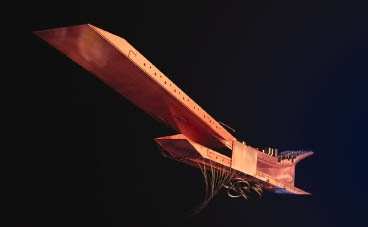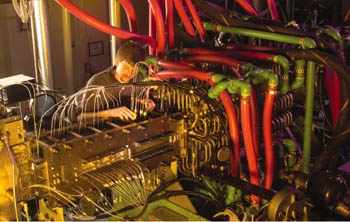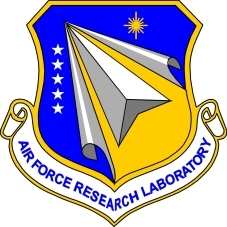Running at Mach 6.5!
 Pratt & Whitney (P&W) has
completed Mach 4.5 ground testing on the world's first
flight-weight, hydrocarbon-fueled, scramjet engine. Ground testing
at Mach 6.5 is expected to be completed later this month.
This engine, known as the Ground Demonstration Engine (GDE-1), uses
standard JP-7 fuel in an "endothermic/regeneratively cooled cycle"
during which the fuel cools the engine's interior walls before
being introduced to the combustion chamber to produce trust. The
engine injects, mixes and burns fuel to make thrust in a time span
of less than 0.001 seconds.
Pratt & Whitney (P&W) has
completed Mach 4.5 ground testing on the world's first
flight-weight, hydrocarbon-fueled, scramjet engine. Ground testing
at Mach 6.5 is expected to be completed later this month.
This engine, known as the Ground Demonstration Engine (GDE-1), uses
standard JP-7 fuel in an "endothermic/regeneratively cooled cycle"
during which the fuel cools the engine's interior walls before
being introduced to the combustion chamber to produce trust. The
engine injects, mixes and burns fuel to make thrust in a time span
of less than 0.001 seconds.
Successful ground testing of GDE-1 represents a significant
milestone for P&W Space Propulsion, which is teamed with Air
Force researchers under the Hypersonic Technology (HyTech Program).
GDE-1 testing followed the team's outstanding results on the
Performance Test Engine (PTE), which completed testing in 2001.
"GDE-1 testing is a huge step toward flight-testing, which is an
essential next step to the evolution of this technology," P&W
Space Propulsion & Russian Operations President Larry Knauer
said. "We are on track for this program to change the aerospace
industry forever, as this technology will create a paradigm shift
in the way we employ propulsion for access-to-space and global-
reach applications."

The GDE-1 engine, which weighs less than 150 pounds, produced
net positive thrust during 45 runs at Mach 4.5 and 12 runs at Mach
6.5 between September 2002 and June 2003.
"The initial phase of this program is intended to evaluate
engine operation and structural/thermal margins at Mach 4.5 and
6.5," Knauer said. "Engine testing is proceeding as planned, and
the simulation and resultant engine performance is comparable to or
better than our previous PTE. Our fuel- cooling flow rates are
matched to combustor flow requirements and metal temperatures and
fuel temperatures match predictions."
The next engine in this successful series of ground
demonstration engines will be denoted GDE-2. This engine will also
be fuel-cooled and flight-weight like the GDE-1; however, GDE-2
will feature a fully integrated fuel-system that will introduce
control hardware and software, allowing the engine to run as a
complete closed-loop system. GDE-2 will incorporate a Full
Authority Digital Engine Controller (FADEC) to orchestrate complex
fuel controls and transitions.

"We expect the first full-up GDE-2 to be testing in
'04," Knauer said, "and we have a derivative of GDE-2
scheduled for flight test '06/'07." To develop the GDE design, the
Hydrocarbon Scramjet Engine Technology (HySET) team used a
building-block approach that began with computational fluid dynamic
codes. The world-class hypersonic codes define combustion products
while optimizing the fueling locations and concentrations required
for top performance. Computational results are used to refine
engine lines, allowing optimization of the engine design prior to
test. Near-term applications for the HyTech technology include a
fast-reaction, long-range air-to-surface missile with a Mach
6.5-plus-cruise capability to fly hundreds of nautical miles in
minutes.
 Such missiles could be
carried on fighter and bomber aircraft in U.S. Air Force inventory
and on U.S. Navy aircraft, ships and submarines. The long-term
vision for the scramjet engines include power for launch vehicles
that can substantially reduce the cost of access to space, along
with military and commercial aircraft that can span the globe in
less than a few hours.
Such missiles could be
carried on fighter and bomber aircraft in U.S. Air Force inventory
and on U.S. Navy aircraft, ships and submarines. The long-term
vision for the scramjet engines include power for launch vehicles
that can substantially reduce the cost of access to space, along
with military and commercial aircraft that can span the globe in
less than a few hours.
The U.S. Air Force established the HyTech Program in 1995 to
maintain an aggressive technology development program in
hypersonics after the National Aero-Space Plane's development was
terminated. In 1996, P&W won a $48-million contract for HySET.
As a result of the program's success, the X43-C, a joint USAF/NASA
program, has emerged. The goal of this program is to flight test a
derivative of the HySET engine in 2007.
 Aero-TV: DeltaHawks Diesel Power Steps Into the Spotlight
Aero-TV: DeltaHawks Diesel Power Steps Into the Spotlight NTSB Prelim: Mooney Aircraft Corp. M20K
NTSB Prelim: Mooney Aircraft Corp. M20K ANN FAQ: Turn On Post Notifications
ANN FAQ: Turn On Post Notifications ANN's Daily Aero-Linx (12.20.25)
ANN's Daily Aero-Linx (12.20.25) Aero-News: Quote of the Day (12.20.25)
Aero-News: Quote of the Day (12.20.25)






